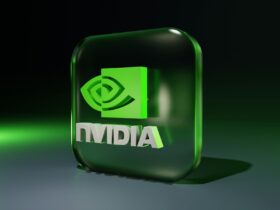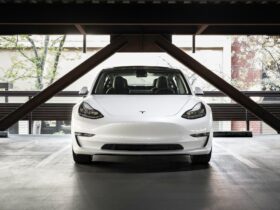AI Is Fueling Market Records — But Should Investors Be Nervous?
Artificial intelligence has become the most powerful force driving the stock market in recent years. From skyrocketing chipmakers to tech giants announcing bold AI plans, AI has captured investor imagination like few innovations before it. Companies are racing to showcase their AI capabilities, and investors have poured billions into stocks like Nvidia, Microsoft, Alphabet, and other AI leaders.
But as the excitement builds, so does uneasiness.
After a massive run-up in AI-related stocks — and with the “Magnificent 7” now representing an unprecedented share of the S&P 500 — experts are beginning to question whether the market is overheating. Some analysts warn that the current environment echoes the late-1990s dot-com bubble, when speculation outpaced reality and led to one of the most painful market crashes in history.
So the big question becomes: Are we witnessing the early stages of an AI bubble, or is this the beginning of a genuine economic breakthrough?
Let’s take a deeper look at what experts are saying — and what investors should realistically expect moving forward.
The AI Boom Has Ignited the Stock Market
Artificial intelligence has catapulted the stock market to new heights. Companies are touting AI capabilities to boost investor confidence, while AI hardware and software providers have seen explosive demand. Nvidia, the face of the AI surge, continues setting record highs as demand for its chips outpaces supply.
Across the tech sector, the narrative is similar:
- Corporations believe AI will transform productivity.
- Investors expect long-term, multi-trillion-dollar growth.
- Wall Street has rewarded anything related to AI with massive valuation increases.
However, as more companies jump onto the AI bandwagon, skepticism has begun creeping in. Investors and economists alike are starting to ask whether expectations are running ahead of reality.
Why Comparisons to the Dot-Com Bubble Are Increasing
The parallels between today’s AI excitement and the 1990s dot-com bubble are becoming hard to ignore. Back then, internet-related companies saw extraordinary stock growth despite many having little revenue, no profits, and shaky business models. When reality failed to match the hype, the crash wiped out trillions of dollars.
Today, AI stocks have soared so rapidly that some analysts worry the market may be pricing in decades of growth that may take far longer to materialize.
Bubbles form when:
- Growth expectations are exaggerated
- Stock prices disconnect from fundamentals
- Speculation eclipses business performance
- Capital floods into a concentrated group of companies
These ingredients are already starting to appear in pockets of the AI market, fueling a debate about whether this surge is sustainable.
The Market’s Reliance on a Handful of AI Giants Raises Concerns
Rebecca Homkes, economist and lecturer at the London Business School, summed up the situation clearly:
“The stock market is a giant bet on AI right now. It’s really 10 companies driving all of it.”
She’s right. The “Magnificent 7” — Alphabet, Amazon, Apple, Meta, Microsoft, Nvidia, and Tesla — now represent 37% of the S&P 500’s total value, according to Morningstar. That concentration is unprecedented. In terms of market influence, no group of companies has ever commanded such dominance.
The danger?
If sentiment shifts or AI excitement cools even slightly, the market could react quickly — and painfully.
This heavy reliance on a few mega-cap stocks has everyday Americans nervous, particularly those saving for retirement in 401(k)s or IRAs. Just like during the dot-com boom, if the music stops, large portions of the market could suffer.
Are AI Stocks Overvalued? Pros Say It’s Complicated
Despite growing concerns, many analysts argue today’s market is not yet in bubble territory.
Goldman Sachs, for example, points out that the median price-to-earnings ratio of the Magnificent 7 is roughly half of the highest-valued companies during the late 1990s. That means that while valuations are high, they are still grounded in real revenue and real profits — unlike the speculative frenzy of the dot-com era.
As the analysts wrote:
“Valuations are high, but not nearly as extreme as typical bubble conditions.”
This suggests that while AI stocks are expensive, they may not be dangerously inflated—at least not yet.
Why This Time Might Be Different
One of the biggest arguments against an AI bubble is that today’s tech leaders have something dot-com companies didn’t: profits, revenue, and proven business models.
Federal Reserve Chair Jerome Powell addressed this directly:
“This is different in the sense that these companies… actually have earnings and stuff like that.
Back in the ‘90s these were ideas rather than companies.”
Take Nvidia. Its revenue jumped to $130 billion, more than doubling in the last fiscal year. Its profits surged 145%. That’s not hype — that’s real performance driven by real demand.
Unlike the dot-com bubble, where investors bought into potential, today’s AI giants have proven infrastructure and massive cash flow backing their expansions.
But Can AI Live Up to the Enormous Expectations?
Even though AI companies have real financial strength, economists still question whether the promises of artificial intelligence are fully achievable — at least in the timeframes investors are expecting.
The AI boom rests on the belief that AI will:
- Transform corporate productivity
- Fuel an economic expansion
- Improve decision-making
- Reduce labor costs
- Unlock new business models
- Support trillions in new infrastructure investments
These outcomes could happen — but the timeline may be much longer than markets assume.
As Homkes cautions:
“We want to understand whether this is storytelling or actual tangible gains.”
In other words, are companies promising too much too fast?
The Cost Side of the AI Revolution Is Massive
Behind every AI model, every chatbot, and every autonomous system lies an enormous financial investment. Businesses are spending trillions collectively on:
- Data centers
- Cloud infrastructure
- AI chips
- Server GPUs
- High-performance computing clusters
- Renewable energy to support those systems
This raises an important question:
Will the return on investment justify the enormous cost?
If AI fails to deliver the expected productivity boom, companies may find themselves burdened with oversized infrastructure that doesn’t pay off quickly.
That disconnect could be a catalyst for an AI market correction.
The Bull Case: AI Could Fuel the Next Industrial Revolution
Not everyone is cautious. Some analysts believe AI represents a once-in-a-century technological shift that will fundamentally transform the global economy.
Wedbush Securities analyst Dan Ives argues:
“This is an AI Arms Race. Big Tech spending is fueling the next chapter of growth — and it is NOT slowing down into 2026.”
Many tech evangelists envision AI transforming:
- Healthcare
- Manufacturing
- Transportation
- Education
- Finance
- Logistics
- Customer support
- Cybersecurity
- Software development
If AI delivers even a fraction of that transformation, the long-term upside could dwarf current valuations.
Homkes agrees the technology is transformative but adds a dose of realism:
“This shift is likely to take much longer than some AI boosters envision.”
Is an AI Bubble Forming — or Is This Just the Beginning?
So should investors worry about an AI bubble?
The answer is nuanced.
On one hand, AI enthusiasm is unquestionably high. Valuations are elevated, market concentration is extreme, and expectations border on ambitious. These conditions echo several warning signs from past bubbles.
On the other hand, today’s AI companies have real revenue, massive profits, and global dominance. Unlike the dot-com era, these businesses are not built on speculation but on tangible performance and proven demand.
The real question isn’t whether AI is important — it clearly is. The question is whether the market is pricing AI growth too quickly, without allowing time for the technology to mature and deliver on its promise.
For investors, the best approach may be balance:
- Acknowledge the revolutionary potential of AI
- Avoid overconcentration in a few mega-cap tech stocks
- Stay alert for signs of overheated valuations
- Think long-term rather than chasing short-term hype
AI is not a bubble yet — but the future will depend on whether the bold promises of transformation match the real-world results.






